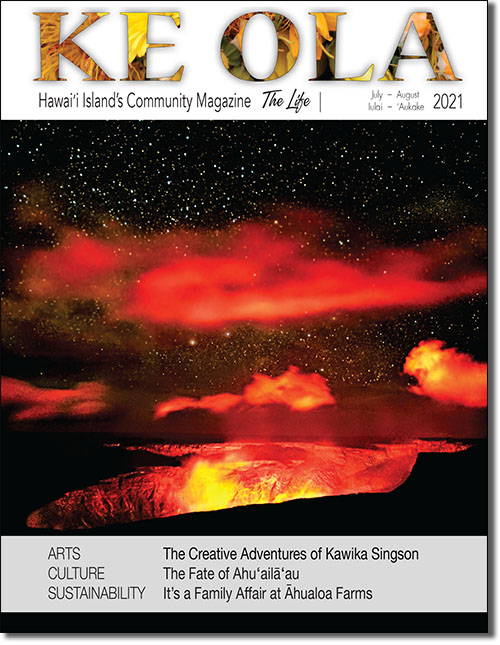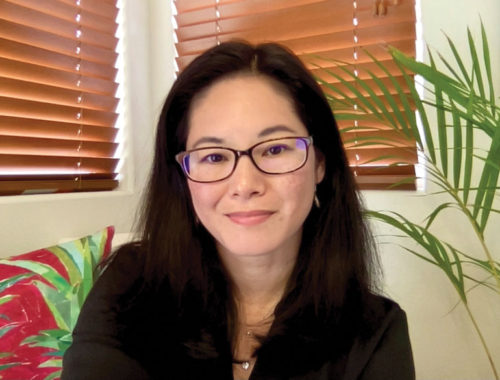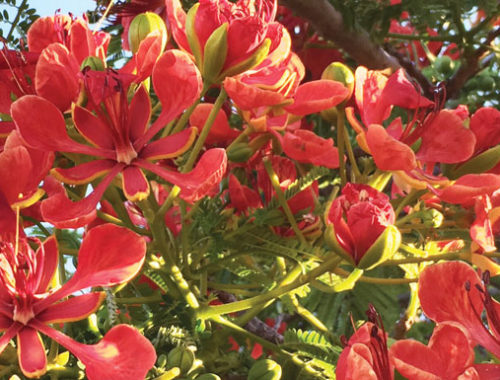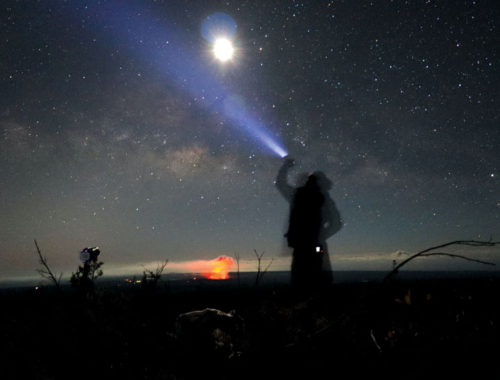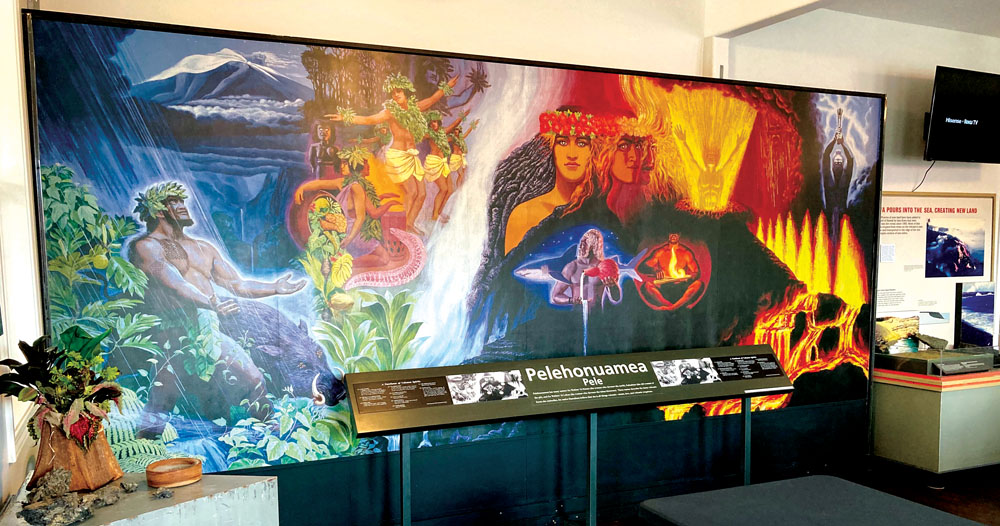
Welcome to the Lava Zone

By Brittany P. Anderson
It’s hard to forget that day—May 3, 2018. The ground shook and cracked open, slowly blanketing land and homes, smothering dreams and spitting out steam. Then, the molten orange lava burst free, weaving a path of mesmerizing destruction. We hugged each other, fed and clothed our island brothers and sisters. Cows, horses, dogs, and cats were shuttled to safety in harrowing rescues by air and by sea. We watched, hypnotized by the power of Madam Pele.
By the time it slowed to a halt on September 4, the 2018 lava eruption in the Lower East Rift Zone (LERZ) in the Puna district had claimed hundreds of homes. Many lives have been changed, as much as the region’s topography. Covering nearly 14 square miles, it will take years for the 30 billion gallons of lava that poured over the LERZ to thoroughly cool.
Although it proved difficult for the community, the eruption granted a unique opportunity for scientific discovery. At the Pahoa Lava Zone Museum, patrons can witness the awe of the 2018 eruption and learn about volcanic activity history, while it also offers a place for the community to speak about life in the LERZ.
Capturing the Flow
A wa‘a kaulua, Polynesian double-hulled voyaging canoe, cuts through waves off Punaʻs coast. The water glows red, reflecting lava flowing down Kīlauea volcano into the ocean with pillars of billowing grey smoke reaching towards the night sky. The voyagers are transfixed by the powerful display as their sails bring them closer to shore. This floor-to-ceiling reproduction, Discovery of Hawai‘i, by the late esteemed artist Herb Kāne, resides at Pahoa Lava Zone Museum.
Discovery of Hawai‘i and the iconic mural A Pantheon of Volcano Spirits, also by Herb Kāne, originally resided in the Jaggar Museum located within Hawai‘i Volcanoes National Park. During the 2018 eruption, the crater’s edge, where the museum was perched, collapsed, rendering the building unsafe. Hawai‘i Volcanoes National Park reached out to the Mainstreet Pahoa Association, a nonprofit organization working on behalf of local businesses and the historic downtown Pāhoa community. Volunteers opened the Pahoa Lava Zone Museum as quickly as possible to accommodate both an influx of visitors and the rescued Jaggar exhibit props.
Herb Kāne captured the striking beauty and primal reaction that grips those that gaze upon Madame Pele. It is hard to turn away from the powerful depiction of Polynesian settlers’ first glimpses of Kīlauea, and yet it somehow matches the intensity of contemporary photography from the 2018 eruption.
The Pahoa Lava Zone Museum is home to exclusive footage from the 2018 eruption. Local photographers like Demian Barrios and Harry Durgin have their eye-catching work on display at the museum. The self-proclaimed “lava-chaser,” Demian documented the experience of those that dared to stay in their homes and shared it with the world via his social media accounts. Harry captured the paralyzingly beautiful sights with his stunning nightscapes of glowing fountains of lava.
Just as local photographers flocked to document the historic eruption, scientists were also drawn to study and learn more about the volcanic activity in the LERZ.
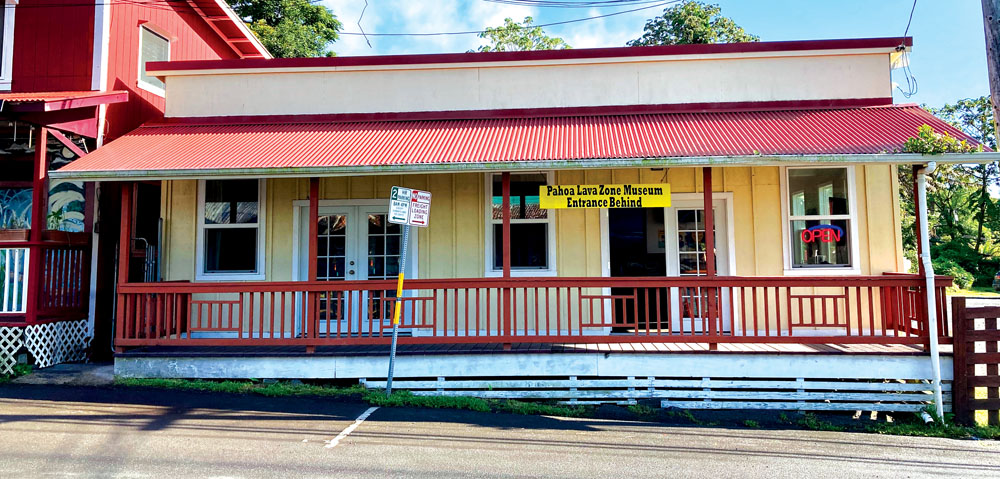
Reality of a Region
US Geological Survey geologists first carved up the map of Hawai‘i Island into lava hazard zones in 1974. These zones indicate the risk of lava flows in each area: the lower the number, the greater the risk. Pāhoa and the LERZ are located in Lava Zone 2, meaning the risk of eruption is high. The low-lying area of Pāhoa, plus historical data and proximity to Kīlauea volcano, mean lava is a constant reality to the region.
The nearby subdivision of Leilani Estates falls entirely within Lava Zone 1. During the 2018 eruption, outbreaks of lava fountained up to 300 feet high; fast-flowing lava and toxic volcanic gas engulfed the subdivision. Geologists and volcanologists studied the events extensively. Air quality was monitored closely as any changes in wind could send the noxious gasses towards nearby neighborhoods.
Although the 2018 LERZ lava flow is still fresh in many minds, much can be learned from the earlier flows in the area. At Pahoa Lava Zone Museum, naturalist interpreter and volcano educator John Stallman frequently speaks on lessons learned from prior eruptions.
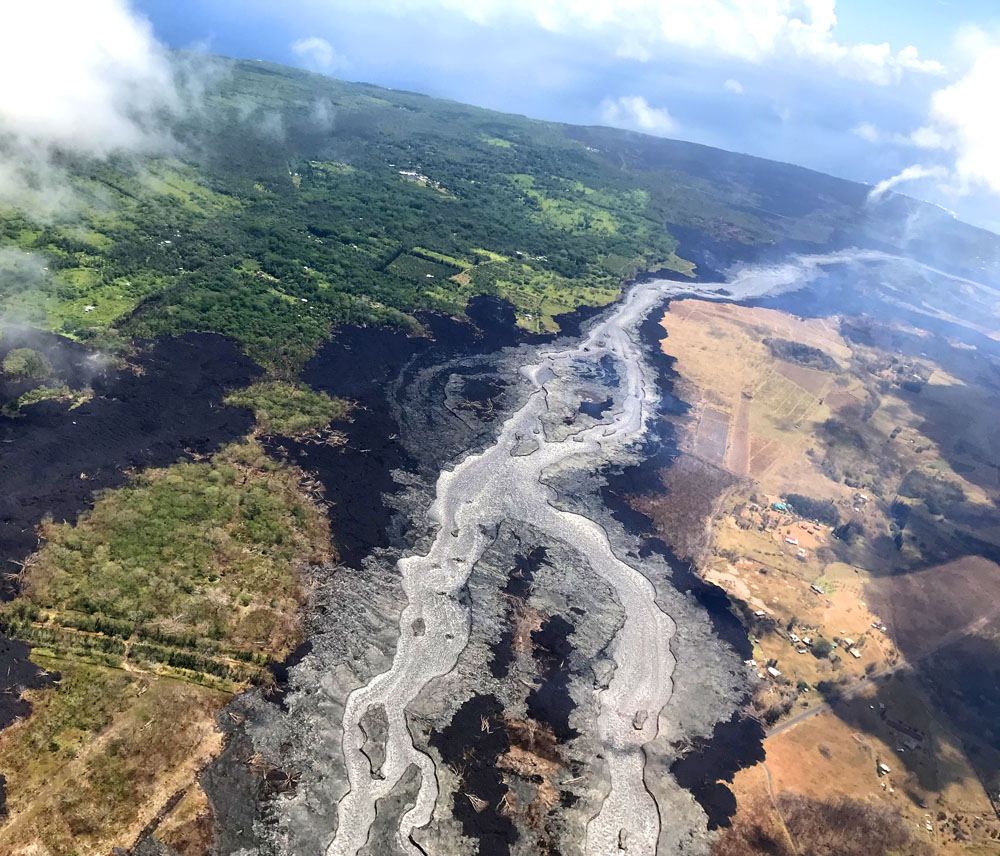
“The museum is very fortunate to be able to work with John and looks forward to more great presentations. His contribution to the museum and its displays are truly amazing,” says Amedeo Markoff, president of the Pahoa Lava Zone Museum and Mainstreet Pahoa Association.
In reviewing the data collected from the past and framing it in the lens of today, we can better understand what to expect from future flows and how best to respond.
The Pahoa Lava Zone Museum offers four displays on loan from the Jaggar Museum detailing the volcanology of the Hawaiian Islands, plus donated specimens from the community. When the museum opened, residents came out to support the museum by bringing geological specimens they had found around their properties. On display are fine threads of volcanic glass commonly referred to as Peleʻs hair, lava rocks collected from rooftops, and a beehive that had been engulfed in lava yet retained the honeycomb shape after cooling. Also, part of the exhibit is an example of lava rock composed of compounds never before seen in Kīlaueaʻs volcanic eruptions. Several televisions display a collection of videos and photographs captured during the event.
While the exhibits from the Jaggar Museum are the foundation of the Pahoa Lava Zone Museum, it is the community engagement that makes the museum so unique.
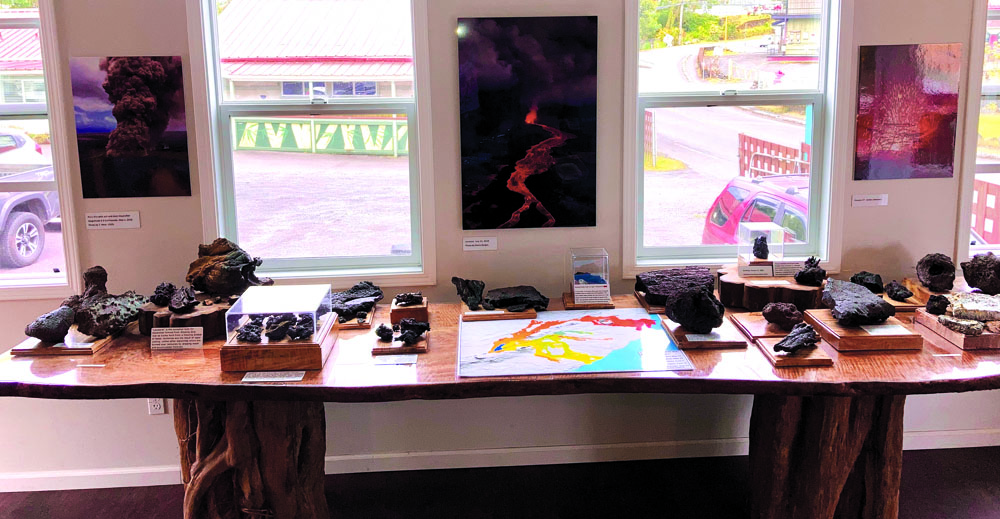
The Heart of a Village
Communities in and around Pāhoa are still struggling to recover from the events of the 2018 eruption. Roads and access to remaining homes in the Leilani and Kapoho neighborhoods have yet to be restored. Downtown Pāhoa was on the verge of revival with community events and new stores opening but the pandemic put a temporary damper on Pāhoa’s comeback. The museum closed, as did a lot of the stores in downtown Pāhoa.
With tourism returning, Pahoa Lava Zone Museum reopened on May 3, 2021, the three-year anniversary of the 2018 LERZ eruption. “We plan on other events moving forward, as visitors start to return and residents start to get back to normal,” remarks Amedeo.
The museum is run by community volunteers and financed solely by grants and donations. “As of February 2020, the museum received 501(c)3 nonprofit status, and continues to work hand-in-hand with the Mainstreet Pahoa Association,” Amedeo adds. Neighboring restaurant Kaleo’s Bar and Grill donates the space and has been essential in the success of the museum.
Many of the museum’s volunteer guides had to be evacuated during the eruption, and some even lost their homes. Part of the draw to visiting Pahoa Lava Zone Museum is hearing the first-hand accounts and the experience of living through such a unique event. Sharing the stories, the knowledge, and the reality of living with an active volcano is a part of the museum’s mission. There’s also a collective catharsis for Puna in the renewal and restoration of downtown Pāhoa.
The Pahoa Lava Zone Museum strives to raise awareness for the continuous volcanic threats to communities in the Puna District and all of Hawai‘i Island. It also helps to inform visitors on where to go and places to avoid so they can have the best visitor experience and ease any negative effects on the community.
Located in the Pāhoa Village building, the museum is quickly becoming the heart of downtown. As visitors return to Hawai‘i Island, and residents reconnect with their island home, the Pahoa Lava Zone Museum is a way to experience the sights and sounds of the 2018 eruption as well as learn about the history of Hawai‘i Island volcanoes. ❖
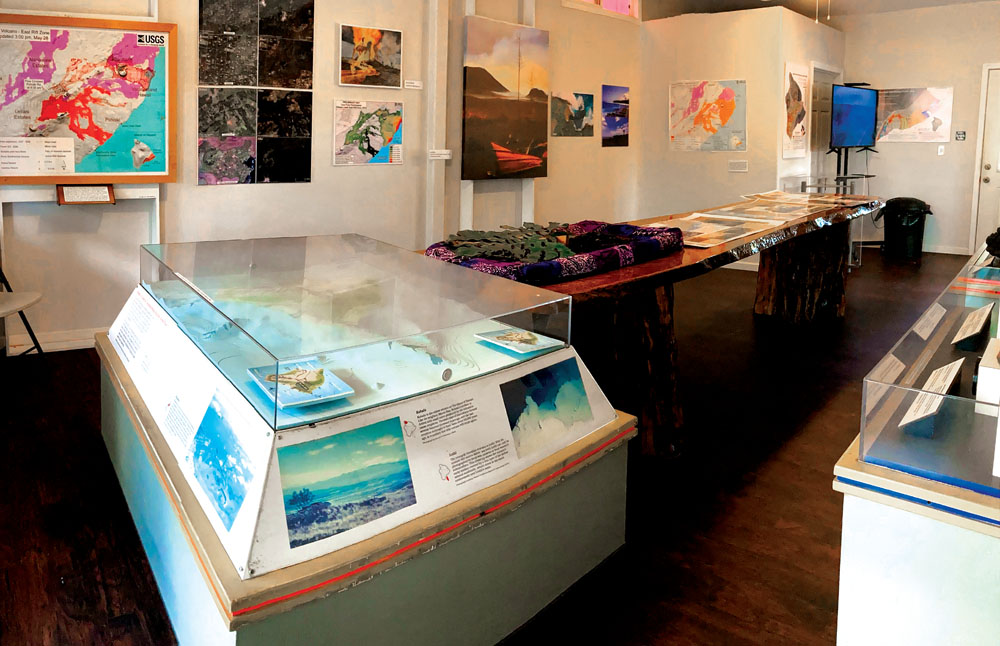
For more information: PahoaLavaZoneMuseum.com
